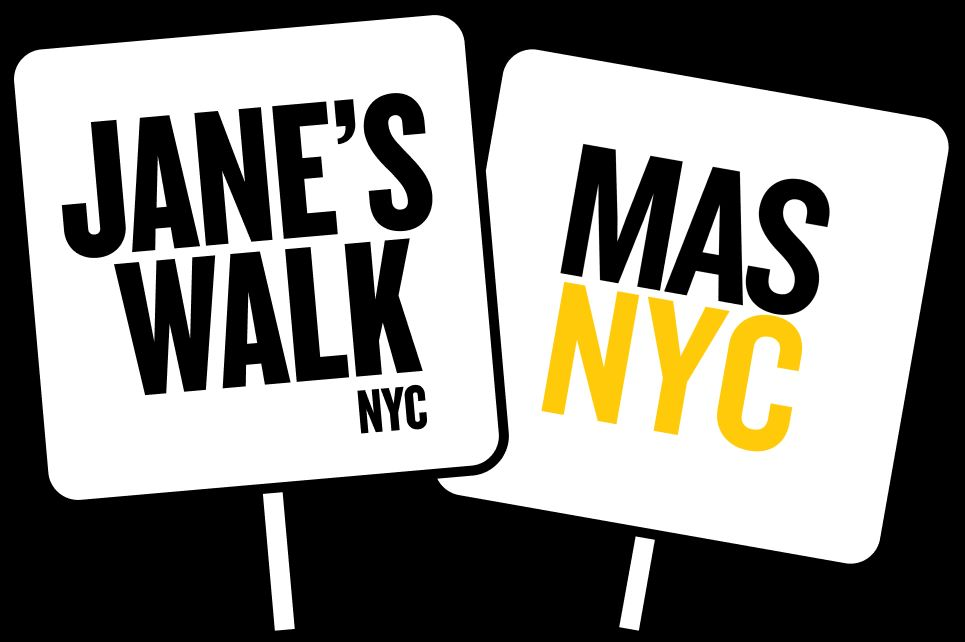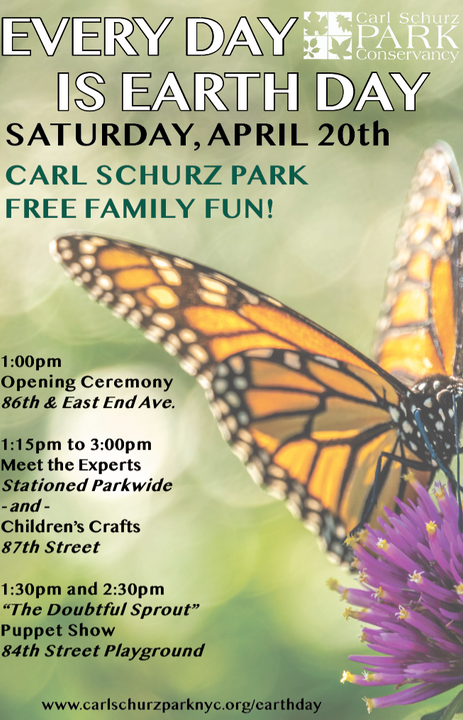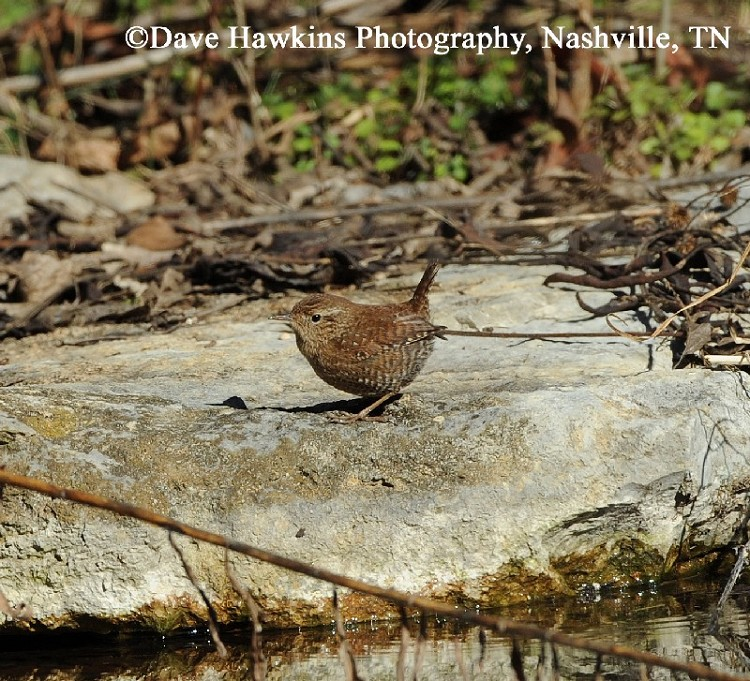Happy World Penguin Day, UESiders!!

And yesterday was National Guide Dog Day… (Labradors being the #1 most trainable/adaptable for that invaluable, wonderful work!!)
Alrighty, then…
How ’bout we’s begin this week on a note usually further down the newsletter track…
As in a really, meaningfully green, local, easy-to-attend/remote happening:
Monday, April 29th, 6:30pm: Community Board 8 Sanitation & Environment Committee Meeting via Zoom
Item #1 on the agenda?? The importance of composting on the environment and sanitation!! And in a world where issue headcount so impacts how our electeds do or don’t act… Be really great for a big number of virtual attendees (even for a couple of minutes) to demonstrate UESide interest/support for full-refunding the program in CB8 and citywide!! Really… Do be there!!
Deep breath… Let’s talk Farmstand and /Greenmarket:
Every Friday: The Lenox Hill Farmstand
70th Street & First Avenue, 11:30am-5:30pm
So great our UES now has two sources of best … Our great Greenmarket north-ish… And the newly minted Farmstand with its two tables of equally primo produce, bread, eggs and more to the south!! (For more…)
Every Saturday: 82nd Street/St. Stephen’s Greenmarket
82 Street between First & York Avenues, 9am-2pm
Expecting our friends at American Pride Seafood, Bread Alone, Ballard’s Honey, Sikking Flowers, Hudson Valley Duck and Haywood’s Fresh, Samascott, Valley Shepherd, Hawthorne Valley and Gajeski Farms!!
Maestra Manager Margaret’s adds her weekly update:
“Dear Greenmarketeers:
There have been a few asparagus sightings at markets this week!!
Not many yet so come out early if you want to be one of the lucky few to be taking some home!!
For the rest of us… Patience is a virtue which will be rewarded with lots of asparagus and other spring veggies very soon!!
In the meantime. there are lots of greens, lilacs, apples and, of course, all the those proteins: Duck.. Beef… Fish… Cheese.. Eggs… And more!!
Enjoy your shopping,
Margaret“
On to our Friday/Sunday/Any Day compost collection:
Every Friday: East 96th Scrap Drop-Off
96th Street & Lexington, 7:30-11:30am
Farewell to the aged guacamole hiding out at the back of the bottom shelf!!
2022 Total: 66,962 lbs.
2023 Total: 42,888 lbs.
Every Sunday: Asphalt Green Food Scrap Drop-Off
91st Street & York, 7:30am-12:30pm
2022 Total (from 3/22): 46,675 lbs.
2023 Total: 65,699 lbs.
Every Day, Any Time: GPG Compost Drop-Off at 65th Street
East River Esplanade (under the pedestrian overpass from York Avenue), round the clock
Available 24/7 with bins open and waiting…
2023 Total: 2,275 lbs.
2023 Grand Total: 110,854 lbs.
Keeping on in the ultra green lane:
Tuesday, May 7th: No Cost Community Shredding!!
York & 79th Street, 9am-12pm
You’ve been waiting… And soon a Shredding Day will be here:
As ever, there’s so much more great stuff happening round about the UES:
Saturday, April 27th: Esplanade Friends First Spring Concert!!
Aycock Pavilion, East River Esplanade at 60th Street, 1-4pm
Friday, May 3rd to Sunday, May 5th: Jane’s Walks
All Around NYC, All Day Long All 3 Days, Free
The great, in-person, guided group tours (plus virtual and self-guided offerings) return with over 200 walks across all five boroughs!! Free!! To check out the many wonderful possibilities…

Saturday & Sunday, May 4th & May 5th: Lunaapeew/Lenape Celebration Weekend
Museum of the City of New York, 1220 Fifth Avenue, 11am-4pm
The Museum’s 2-year celebration honoring of NYC first residents!! Think storytelling, traditional crafts and games, drum and dance performances and disuccsion with Lenape Chiefs and Knowledge Keepers!! Can’t be anything but great!! Adults, $20, Seniors & Students $14, Children free!! For more and tickets…
Tuesday, May 7th: Yorkville 81 Block Association Volunteer Event
Meet in front of 422 East 81st Street, 6pm
Block association board members Barbara, Justin and Kristen invite its great volunteers to cut back spent flowers and remove leaves in the block’s tree beds!! Young, old and inbetween… Should be a done job in about an hour!! Just show up with your scissors or garden clippers!! (They’ll supply gloves and trash bags!!)
Wednesday, May 9th: 19th Precinct Crime Prevention Seminar
19th Precinct, 153 East 67th Street, 7pm
Join !9th Precinct officers as they address our UESide concerns. ..
And just over the horizon:
Thursday, May 30th: 2024 Women of Distinction Awards Ceremony
Zuckerman Auditorium, MSK Cancer Center, 417 East 68th Street, 6:30pm
AM Seawright’s great annual celebration of our women providing outstanding community service and, of course, improving quality of our UESide life!! And you’re invited!! 
How ’bout some more activism:
Should you oppose expansion of gas pipelines in NYState…
And/or if you believe the threatened greater sage grouse is deserving of protection…
Moving on to the realm of diverting diversions:
NYC spring recreation tips and more from NYS DEC… GrowNYC’s great Beginning Farmer Program… Cost-wise home energy upgrades from Consumer Reports… A dentist discovers a dinosaur jawbone in his parent’s home floor... Another year, another coyote in Central Park… Big new business of battery recycling… NYC’s best high schools… The Queensbridge compost rally (nope, we don’t ever let up)… NYS’s new fossil fuel power plant regs…
Moving on to the Hudson River Almanac:
4/16 – Ulster County, HRM 78: While hiking in the Mohonk Foothills in mid-morning, I checked a couple of vernal pools for amphibian eggs. One very small pool had five clusters of spotted salamander eggs. I eventually made my way to the Kleine Kill Pool where I was greeted by a nesting pair of mallards sharing a partially submerged tree trunk with ten eastern (Chrysemys picta picta), and midland (C. p. marginata) painted turtles, the most widespread native turtle in North America. As is often the case, an ill-timed human disturbance caused all the animals to vacate the log leaving this idyllic interspecies moment as just a memory. – Bob Ottens
A Mallard With Painted Turtles!!
4/13 – Bronx, New York City: A Virginia rail, hidden in the Phragmites, was recently heard clattering (“kiddik, kiddik”) in the marsh at Van Cortlandt Park. – Debbi Dolan A Vrigina Rail!!
A Vrigina Rail!!
[The Virginia rail (Rallus limicola) is a medium-sized marsh bird (Rallidae), overall orange with red bill and legs, gray cheek, and black stripes on the back. They are mostly found in freshwater marshes but also occur in brackish and saltwater where they prefer extensive cattails or stands of Phragmites. – eBird]
4/14 – Hudson River Watershed: It is the season when all sorts of wildlife are crossing the road to get to the other side. In recent days it was amphibians. Now we have ducks, most often hen mallards and their brood (ducklings). They will trustingly cross in front of your vehicle, usually in a very precise formation. Twice in the last few days I’ve encountered such a procession on back roads. (Wild turkeys will also make crossings later in the season, albeit with assigned hen turkey “traffic guards.”) It is always advisable to drive carefully and anticipate such crossings. – Tom Lake

Some of Those Trusting Mallards!!
4/15 – Town of New Paltz, HRM 78: We were walking along the Swartekill on Black Creek Road recently on a drizzling morning when we found a newly emerged hatchling painted turtle (Chrysemys picta) in the middle of the road. We could tell it was fresh from the nest because it was slightly covered with soil and the carapace still resembled the shape of the egg from which it had hatched last summer.
That Painted Turtle!!
These were hatchlings, about the size of a quarter and had just emerged from their natal nest. They were technically seven months old but had been waiting for spring to emerge. Up until now, they had lived off energy reserves converted from their yolk.
A quick survey of the area revealed three more live hatchlings and another that had very recently been hit by a vehicle. All five were within a few feet of one another which made it possible to find the nickel-sized opening to the nest cavity a few feet from the roadside. The nest was empty and gentle probing revealed it was only a few inches down to the deteriorating eggshells packed into the floor of the nest chamber. – – Patrick Baker, Tracy Baker
4/15 – Westchester County, HRM 43: As far as I can tell, there is at least one, and I think probably just the one, nestling, moving around through holes in branches in bald eagle nest NY430 in Yorktown Heights. One of the adults carried what appeared to be a Norway rat (Rattus norvegicus) in its beak today on the rim of the nest. It was not clear, however, if the rat was on its way in, or out. – Roger Pare
 Those Eagles and Rat!!
Those Eagles and Rat!!
Hello, Fish of the Week:
4/16 – Hudson River Watershed: Fish-of-the-Week for Week 265 is the pollock (Pollachius virens), fish number 107 (of 237), on our Hudson River Watershed List of Fishes.
A pollock!!
Pollock is one of three cods (Gadidae, Cods and Haddocks) documented for our watershed. The others are the Atlantic cod and the Atlantic tomcod. Atlantic cod and pollock are strictly marine species; Atlantic tomcod is anadromous, migrating in from the sea to inland tidewaters to spawn.
Maintaining our Hudson River Watershed Fish List can be a serendipitous proposition. Pollock has been on our list by virtue of a single occurrence in April 1980, a 53-millimeter young-of-year from Indian Point (river mile 42). Pollock is presently designated as a temperate marine stray, essentially a cold-water fish favoring seawater temperatures of 52 degrees Fahrenheit or less. Pollock feed on small fish and larger crustaceans along coastal slopes that favor a hard bottom. They spawn in late autumn and early winter, making our single record from 1980 likely to be a young-of-winter fish.
Pollock, known colloquially as “Boston blue,” as well as coalfish, green cod, and saithe (Norwegian spelling in the UK) are found in the western Atlantic from Nova Scotia to the New York Bight, although they are reported to Cape Lookout NC. While juveniles are common in the New York Bight (Waldman & Briggs 2002), wintering inshore south to Virginia, adults are rare south of Cape Cod. Adults can reach 42-inches and weigh 35-pounds.
Pollock come in several shades and colors including brownish-green, grayish, smoke gray, but always with an underlying greenish hue. Bigelow and Schroeder in their Fishes of the Gulf of Maine (1953) cite its beautiful olive green color as a differentiating field mark when caught in the company of Atlantic cod and haddock. Another easy field mark is the lateral line: In pollock it is nearly straight; in cod the lateral line arches noticeably forward.
Bigelow & Schroder also report of schools of young pollock running up New England estuaries in autumn in pursuit of rainbow smelt. There was a time when the Hudson River had a significant late winter-early sprig population of anadromous rainbow smelt. Before annotated, detailed records were compiled for Hudson River fish, did pollock chase smelt up our estuary in late winter-early spring? Today, both smelt and pollock do not find the warm temperate waters of the estuary and New York Bight comfortable. The pollock may never have been here, and the smelt are all but gone. – Tom Lake
4/17 – Rockland County, HRM 32: An eastern black snake (Pantherophis alleghaniensis), estimated to be no less than five-feet-long, was first spotted by Congers Lake groundskeeper Donato Parisi. DEC Region 3 was contacted to confirm the identification and suggested, after viewing photos, that the extremely well-fed black snake had likely just come out of hibernation. DEC biologists reiterated that eastern black snakes, despite their size, are not dangerous to people. – Nick Caloway, Jen Zunino-Smith
An Eastern Black Snake!!
[Pantherophis alleghaniensis, the eastern black snake is endemic to North America. It is a species of non-venomous snake in the family Columbidae (constrictors). They are excellent swimmers and climbers and use these skills to catch a variety of food such as rodents, frog, and bird’s eggs. They can grow to eight-feet-long and, as constrictors, they use their body to suffocate their prey. Tom Lake]
4/18 – Hudson River Watershed: Round-lobed (Hepatica americana) and sharp-lobed hepatica (Hepatica acutiloba) are two of our earliest plants to flower, blossoming in early to mid-April, before tree leaves have unfurled, allowing the sun’s rays to reach the forest floor.
A Round-Lobed Helvetica!!
The leaves of these plants are evergreen; new ones are produced in May. They remain on the plant for a full year, through the next spring’s flowering period (many spring wildflowers, or ephemerals, produce leaves, flowers, and fruits in a short amount of time and then disappear). Not only do hepatica leaves photosynthesize on warm winter days (if snow hasn’t buried them), but even worn and tattered they go into high gear in the spring, photosynthesizing before the leaves of other plants have even appeared. Thus, hepatica can produce its flowers earlier than most other spring wildflowers. – Mary Holland
As for the Bird of the Week:
The Collared Forrest Falcon!!
Don’t miss that CB8 Compost meeting,
UGS
Eco Fact of the Week: “The largest salmon [Atlantic] ever known to have been caught in the Hudson River since Seth Green stocked it with spawn nine years ago [1884] was taken in a shad net off Verplanck’s Point, on Saturday. Its weight was 17½ lb., and being a male fish, its weight was the more remarkable. It tore the net of Joseph Conklin, the lucky fisherman, badly before he succeeded in getting it into his boat” (Highland Democrat, May 13, 1893).
Eco Tip of the Week: Printed receipts contain bisphenols such as bisphenol-A (BPA) or bisphenol-S (BPS) which are harmful to both human health and wildlife!! Shred and toss into ordinary trash!!




 Dr. Kristen Lear shares bat basics and sorts through true and false common bat myths!! If you’ve been looking for an introductory, crash course to all things chiropteran, then this is the Bat Chat for you. Free!!
Dr. Kristen Lear shares bat basics and sorts through true and false common bat myths!! If you’ve been looking for an introductory, crash course to all things chiropteran, then this is the Bat Chat for you. Free!! 
 That NY62 Bald Eagle With Goldfish
That NY62 Bald Eagle With Goldfish














 Then and on the pure pleasure score:
Then and on the pure pleasure score:



 An Atlantic Salmon!!
An Atlantic Salmon!!


 Federal Dam at Troy
Federal Dam at Troy




























